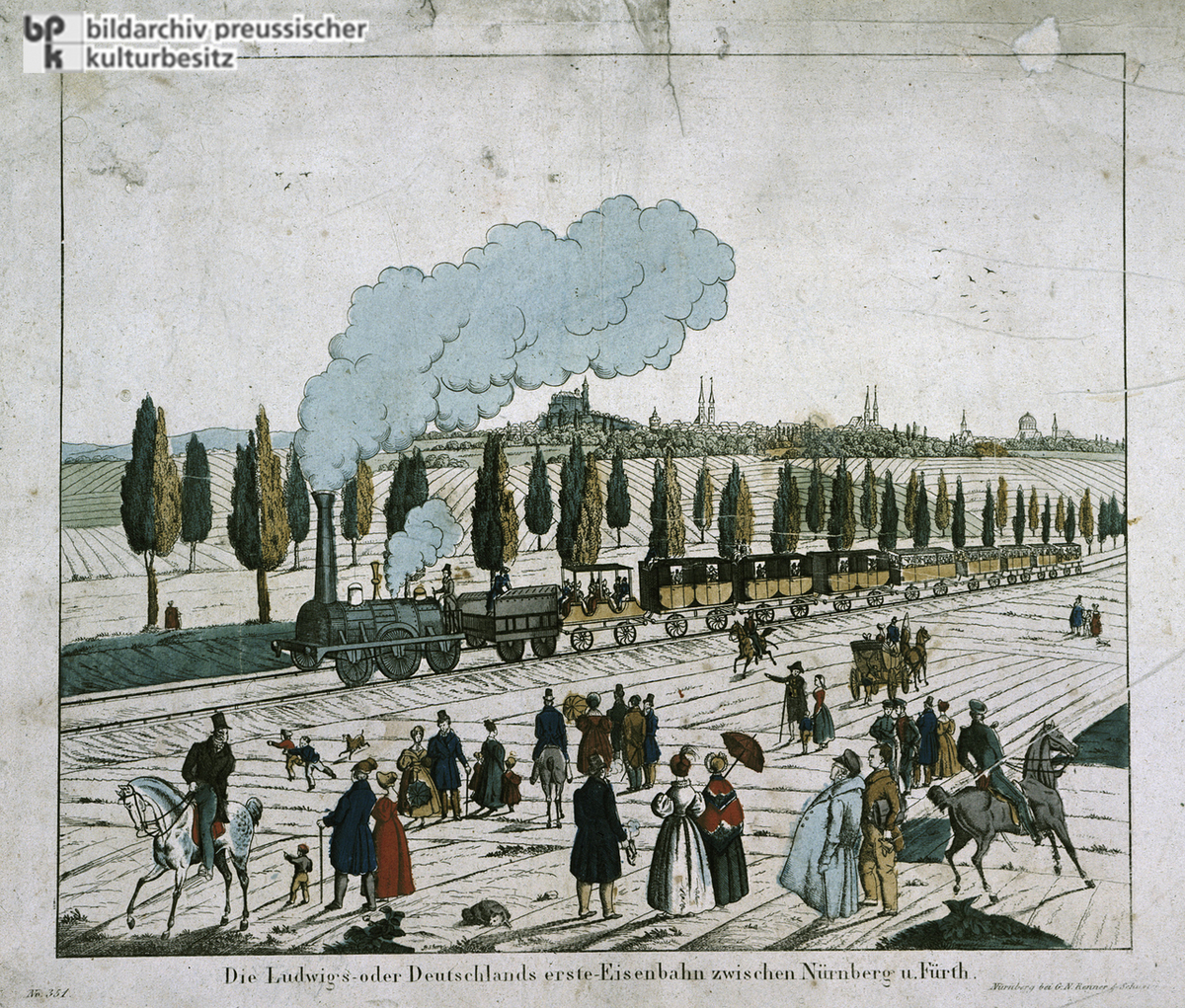The Opening of the Nuremberg-Fürth Line (December 7, 1835)
Abstract
The existence of railways in England fascinated German business elites above all in Bavaria, where the road connecting the commercial centers of Nuremberg and Fürth was the busiest in the kingdom. In 1833, these elites formed a joint-stock company to raise funds for a narrow-gauge line to link the two cities by rail. The enterprise attracted the interest of King Ludwig of Bavaria, who lent government money, and his name, to what eventually became the Ludwigsbahn, or Ludwig Railroad. The line opened on December 7, 1835; it relied on a steam locomotive and a conductor supplied by an English company in Newcastle. Rail travel prompted two fundamental transformations in the popular perception of space and time: the distance between spaces narrowed as people were able to visit locations that had previously been out of reach, and time accelerated as people moved from place to place at speeds unmatched in the history of land travel. And speed was of the essence, for the Ludwigsbahn initially delivered perishables of apparent need: newspapers and beer.
Source

Source: „Die Ludwigs- oder Deutschlands erste Eisenbahn zwischen Nürnberg und Fürth.“ Etching, colored (1835). Kunstbibliothek, Staatliche Museen zu Berlin.
© bpk / Kunstbibliothek, SMB